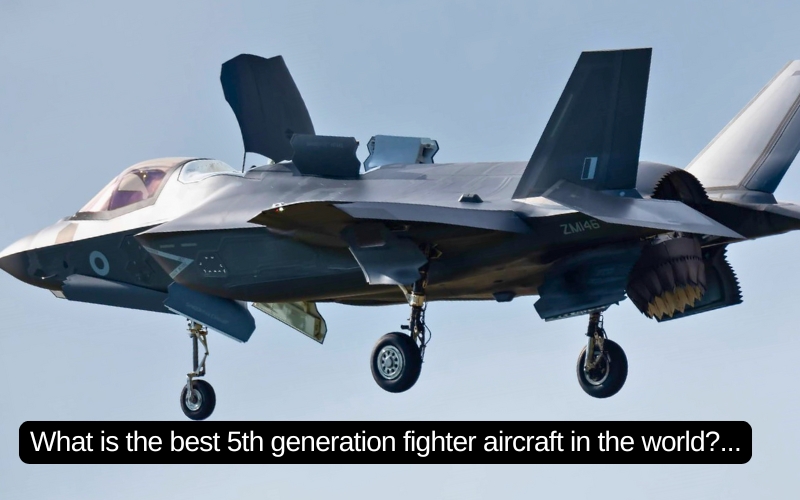Ancient civilizations invented the predecessors of all weapons used until the discovery of gunpowder. Although most were significantly primitive, there were ancient weapons that were far ahead of their time.
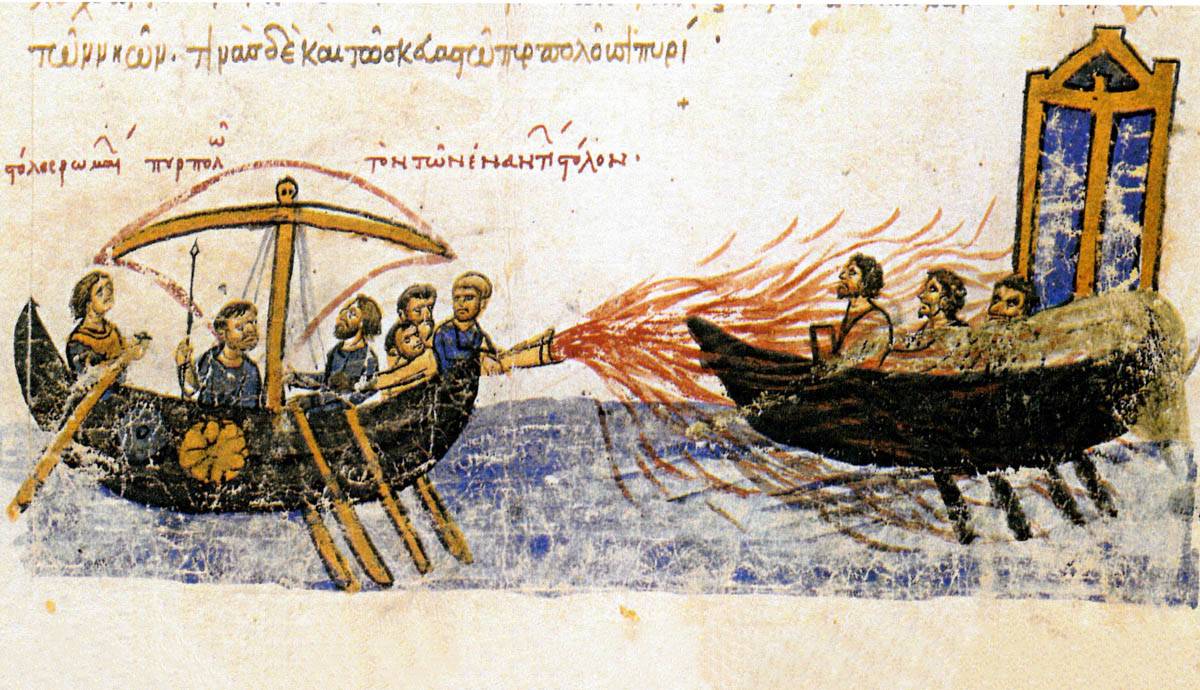
“Futuristic” designs and technical innovation are not just limited to our modern-day technologies. Ancient societies also turned out brilliant and often strange weapon conceptions that were considered very advanced, and some of their basic designs are still used today. Many ancient weapons utilized familiar designs including swords, spears, axes, hammers, or bows. Most of them had either sharp edges for cutting, sharp points for thrusting, or heavy heads for crushing.
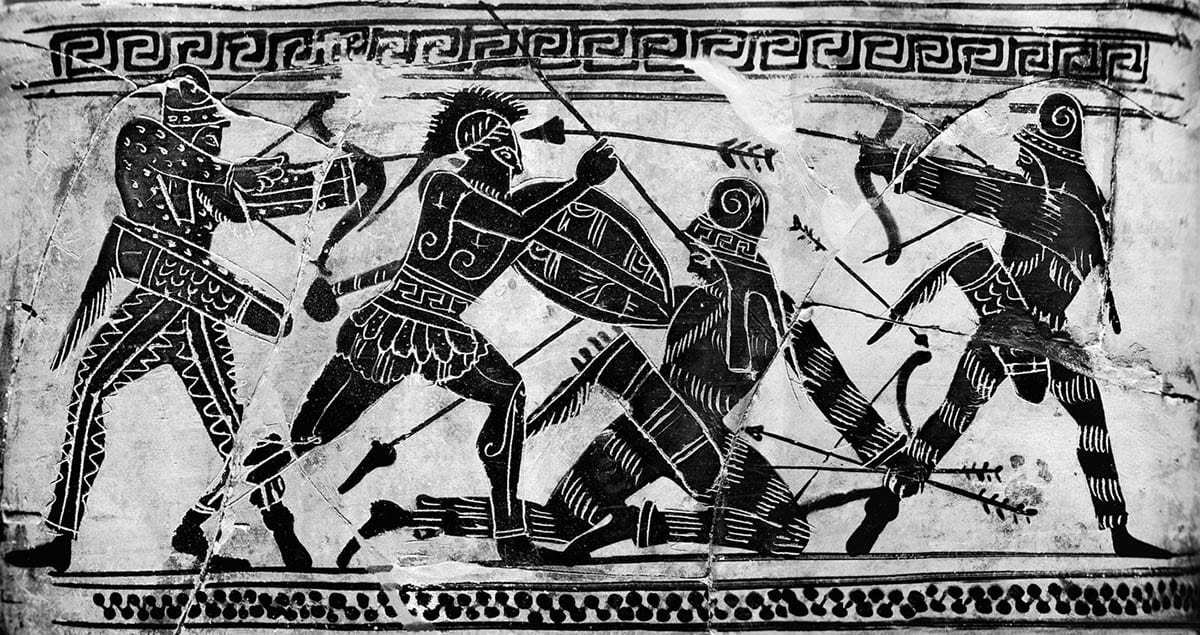
The evolution of these ancient weapons did not change drastically, and many combined known weapon forms to create new hybrids. These were often created by some of history’s most famous inventors such as Archimedes. The continued use of these weapons in this period of history can be justified by the slow development of science, which was far more primitive than we know it today or even in comparison to Medieval Ages. However, some of the ancient designs proved extremely innovative and highly effective.
In this article, we will discuss seven unique ancient weapons that predated Medieval weaponry and were very ambitious for their time.
Ancient Weapons From China
1. Chu-Ko-Nu: Ancient Chinese Crossbow
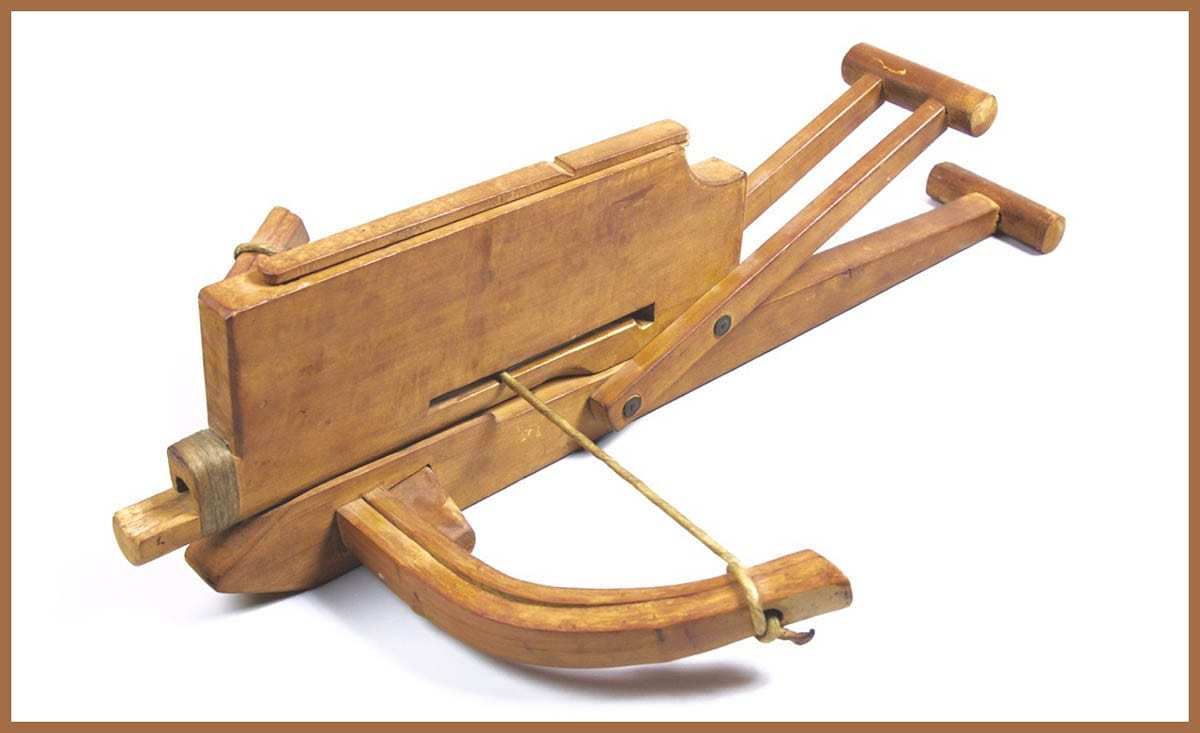
The Chinese repeating crossbow known as Chu-Ko-Nu is one of the most famous ancient weapons, which even predates the medieval European crossbows. It dates back to the 4th century B.C. when Chinese engineers of that time managed to create a repeating crossbow that could fire up to ten steel bolts for a short period of only 15 seconds.
Another name that is widely used in historical and science communities is the Zhuge Nu, named after Zhuge Liang who by many historians is claimed to be the first inventor of the weapon. Alternative archaeological discoveries, however, claim that the crossbow was created many centuries before that.
This level of Chinese ingenuity produced a crossbow more modern than their European peers which operated as a semi-automatic weapon. In comparison, European crossbows from this period had to be reloaded after each shot.
It operated by holding the stock in the left hand and then working the rectangular lever with the right hand. So, unlike the regular crossbow which was usually supported by the shoulder, the balance for Chu-Ko-Nu was kept by only using the hands and fired faster.
2. Huo Long Chu Shui: Ancient Chinese Rocket
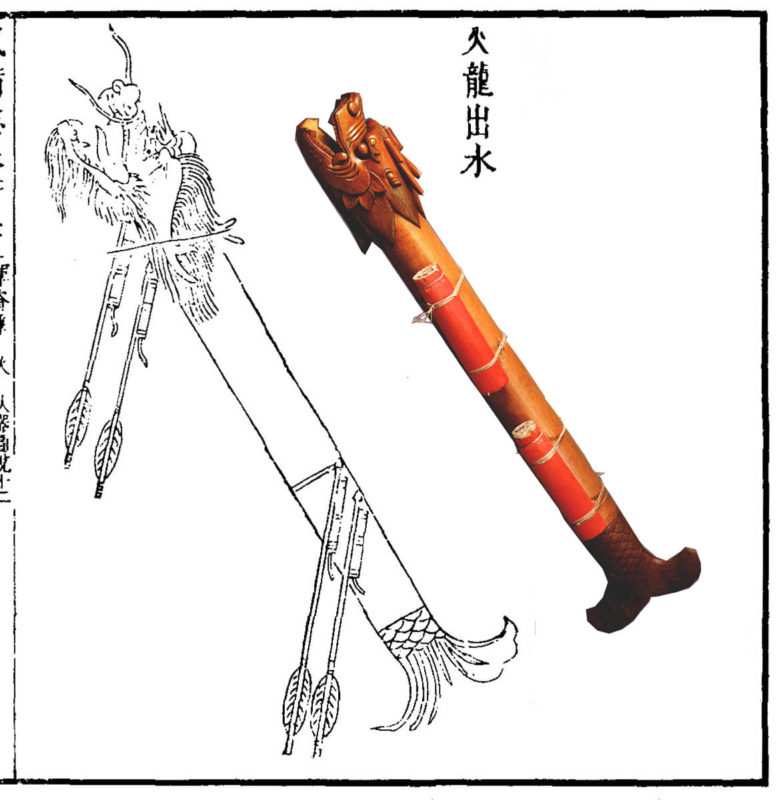
The name of the weapon, which translated to ‘Fire Dragon out of water,’ was used to strike fear into enemy infantry, not to mention that it had a devastating effect.
As strange as it seems, the Huo Long Cui Shui was the earliest form of multistage rockets and ballistic cruise missiles used in China during the Ming dynasty. It consisted of a magazine of three rocket-driven arrows located within the mouth of the missile, fired at enemy ships in naval battles, and on-ground terrains against infantry.
It was useful as both a long-range siege weapon as well as coastal defense artillery. It would automatically ignite fuses of arrow rockets hidden inside the rear of the dragon, which would shoot out of its mouth propelled by the gunpowder to destroy the enemy.
Ancient Greek Weapons Designed By Archimedes
3. Claw Of Archimedes
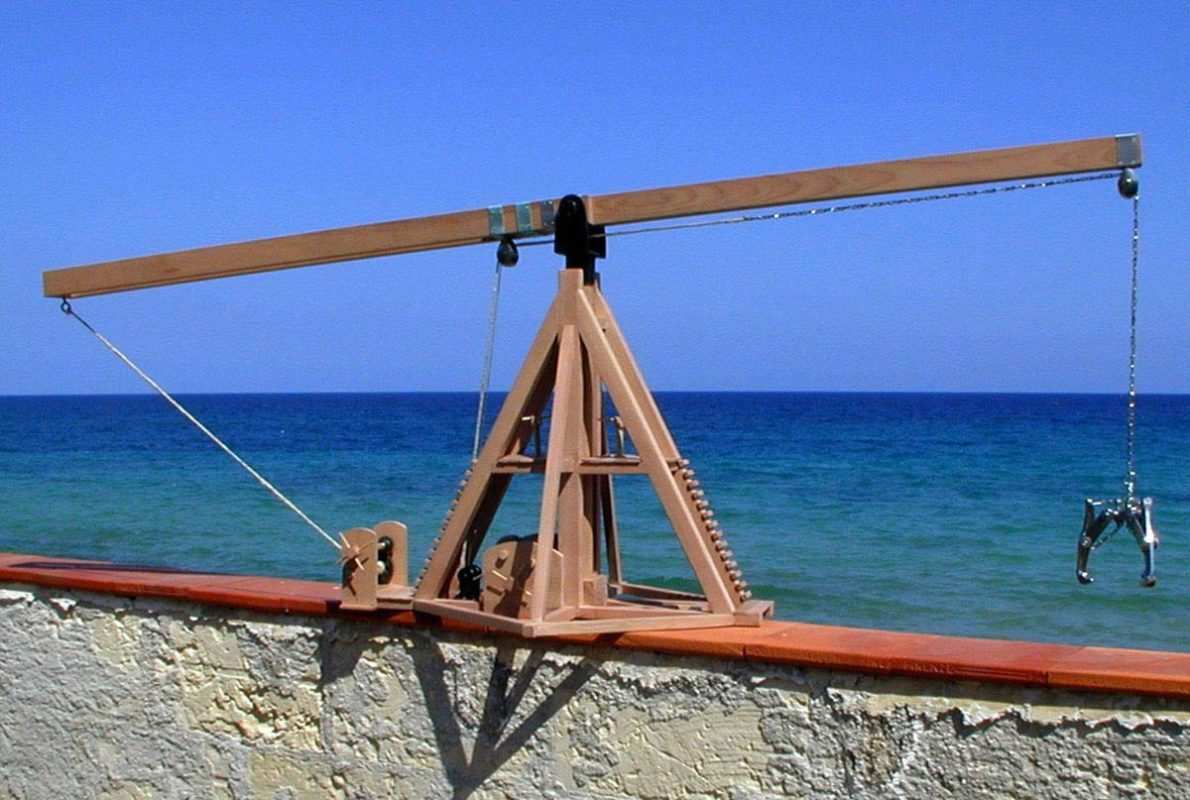
One of the most famous ancient weapons designed by Greek inventor Archimedes was the Claw of Archimedes. This ancient machine was thought to have been installed on the seaward defenses of the city of Syracuse to defend the city against amphibious assaults. Based on the accounts of ancient historians, it is described as a sort of crane equipped with a grappling hook.
The idea of this weapon was quite unusual. It was a mechanism similar to a crane with a rope and a claw at the end. When this claw was activated (probably by a lever) just before the attacking ships approached, it hung on to their bottom and physically raised them thus damaging them greatly. This would result in the ultimate sinking of any ship that was hit.
Based on the accounts, it could even lift an entire ship out of the water, until every man had been shaken out of the hull and thrown in different directions as if they were ants.
4. Archimedes’ Death Ray

Archimedes’ Death Ray is one of the most highly debated ancient weapons in history, as its authenticity and even existence has been contested throughout history. And if it existed, how effective it was. As with the previous fact, we have sources from the famous historian Galen, who mentioned its existence 350 years after the siege of Syracuse. This is the only known source to mention its existence.
In terms of design, it was a set of mirrors that concentrated sunlight towards one direction. It is similar to today’s magnifying glasses, but hundreds of times larger. The result was a high concentration of sunlight, which heated the surfaces of ships, leading to a fire.
To this day, this weapon has been challenged, even by Мythbusters, who twice experimented and proved its ineffectiveness. What would rule out the possibility of such a weapon is the need for great precision, which would be impossible in naval battles. The ships against which it was directed had to stand still and unaffected by the waves. You can watch the experiment in seasons 1 and 2 of Мythbusters, where they heat a thick red oak version of a Roman ship.
5. The Steam Cannon
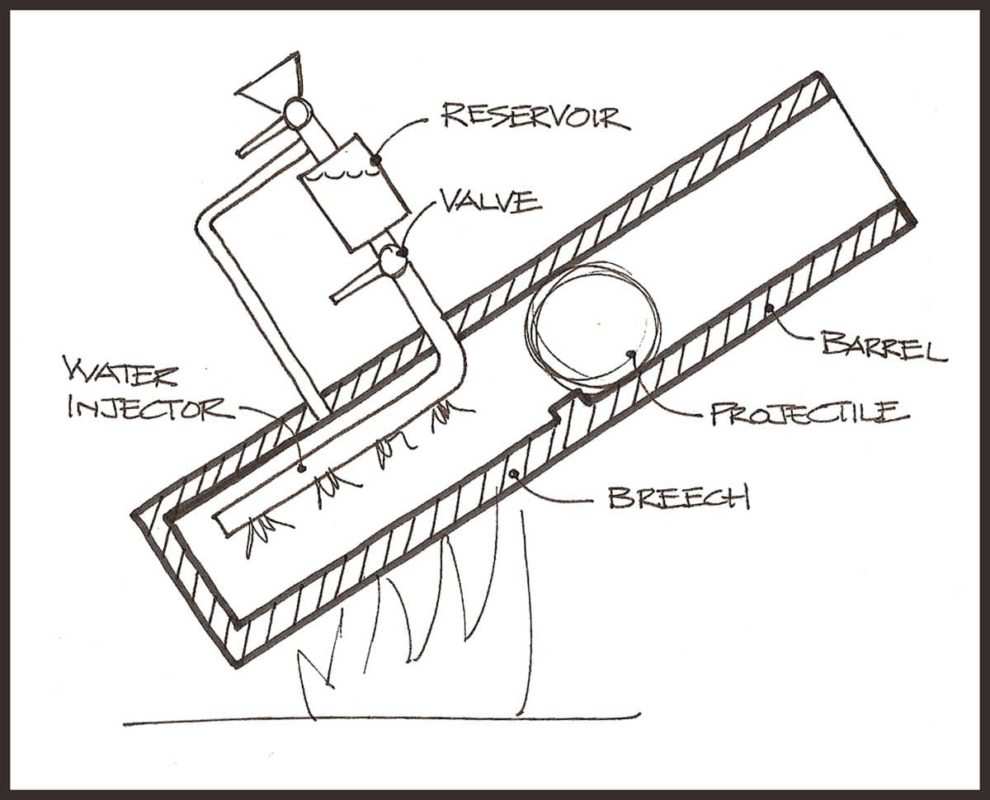
One of the most contentious ancient weapons was Archimedes’ Steam cannon. Most past historians did not believe how a man could create such a technically advanced weapon in 200 BC. However, many contemporary historians believe in the authenticity of this weapon and even the influential Leonardo da Vinci believed that this cannon existed, as he was the first to redesign the steam cannon of Archimedes.
As its name describes it, it was a cannon that functioned with steam. The weapon featured a metal cylindrical boiler which was connected with a closed container of water. At the critical moment, the valve of the weapon would be opened, to let some water and the inserted ball would then fly to a distance of 300 meters, but regulated by the incline of the weapon.
Ancient Weapons From Rome
6. Roman Scissor
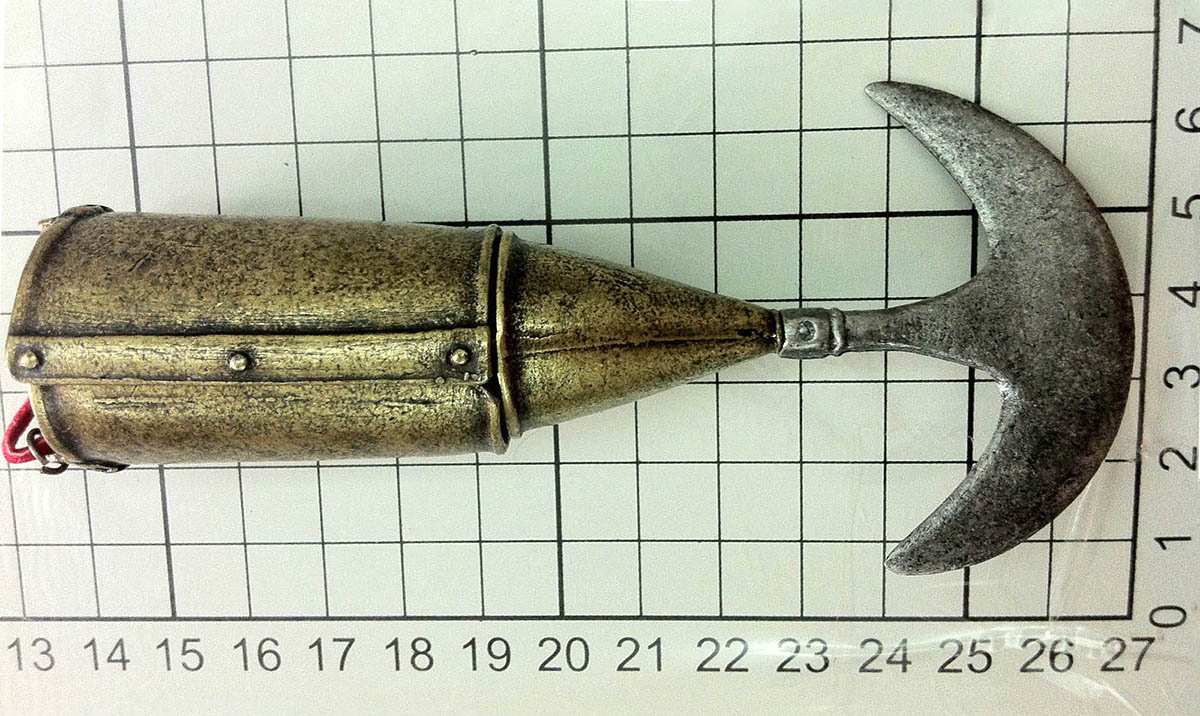
This was one of the many ancient weapons used by the gladiators in ancient Rome. It is a very unusual weapon, vaguely resembling a pirate’s hook, but with a different purpose.
The Scissor consisted of a two-sided blade on the end of a long, metal tube that was worn over the forearm to protect the person wearing it and to enable him to defend himself against swords and other steel weapons. A handle inside the tube allowed the user to maintain a hold on the weapon in the heat of battle, which meant that anybody holding it could hardly lose its grip, making it extremely effective for close combat. It was both deadly and versatile, allowing its wearer to effectively block attacks while attacking.
Ancient Weapons From The Byzantine Empire
7. Greek Fire
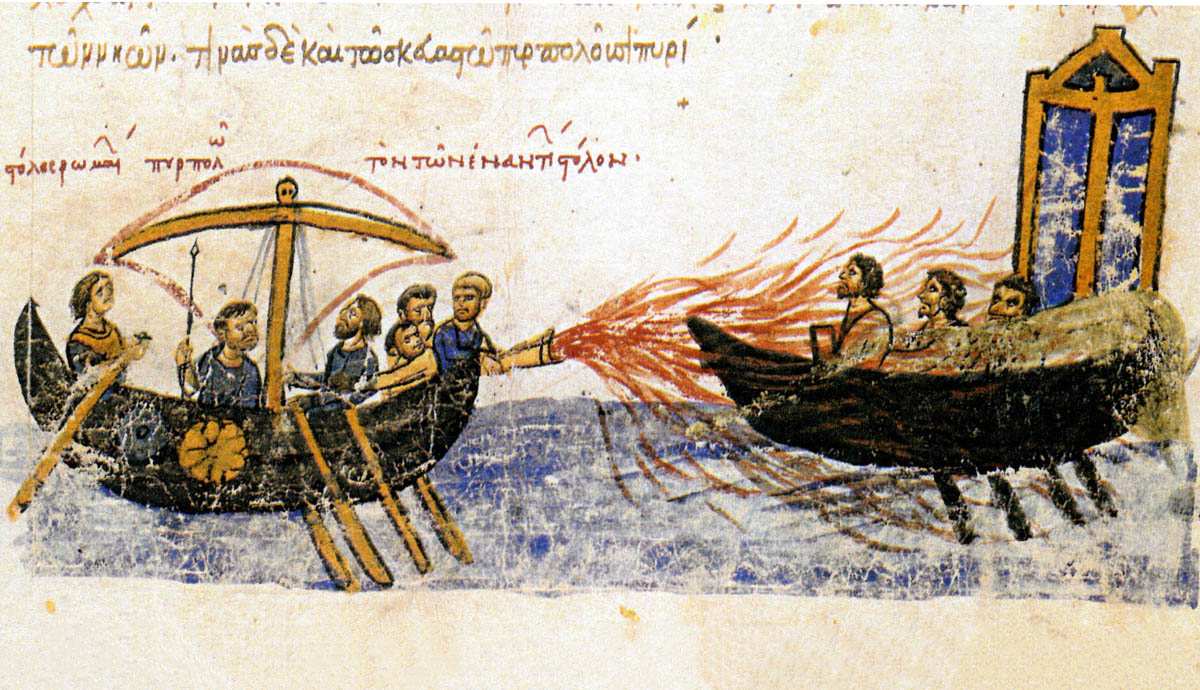
The ancient counterpart to napalm was the Greek fire, developed in the Byzantine Empire in the 7th century. It was one of the deadliest weapons in Europe.
A prominent example of the use of Greek fire was in 730 AD, when the Arabs besieged Constantinople. The Byzantine flotilla, almost ten times smaller, defeated the Arab flotilla only with the help of Greek fire, which had one of the most unique properties – to burn in water. In fact, it burned vigorously when in contact with water and would stick to anything it came into contact with. This leads us to think that the weapon was used most often during naval battles because of its destructive power over enemy ships. Once set on fire, even the water failed to save them.
The true recipe of this substance is still unknown to this day. Some speculate that Greek fire was probably a mixture of petroleum, pitch, sulfur, pine or cedar resin, lime, and bitumen. Little was known about the formula in medieval times, and the formula was only known by the Byzantine emperor.
We can say that the Greek fire is one of the weapons that kept the Byzantine Empire alive until the 15th Century AD. For this reason, it was a closely guarded state secret with only a few people to know its exact composition.









